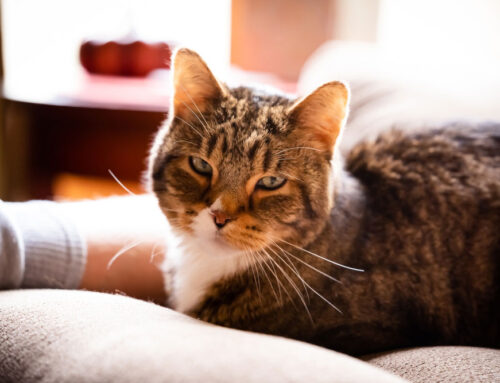A cat seems to require less maintenance than a dog, since there’s no need for multiple walks outside in all weather for bathroom breaks. However, when your cat refuses to use their litter box, you may rethink your opinion on tending to your feline friend. Cats avoid their litter boxes for various reasons—some behavioral, some medical—and determining the cause can be frustrating. And, although your cat may require diagnostic testing and a veterinary evaluation to discover the underlying reason, sometimes it’s as simple as practicing the five golden rules for litter box usage. Check out our tips for keeping your cat happy with their box.
#1: Fussy features can turn your cat away from their litter box
Although cats generally desire privacy when eliminating, a covered litter box can be threatening. Many cat owners turn to covered boxes to prevent litter from being kicked out, urine overspray, and odors from escaping, but cats may not appreciate these benefits. A small, dark space is great for hiding and resting, but not so much for using the bathroom, especially if there is a bully in your home. Limiting your cat’s entrance and exit to one tiny hole can make your pet feel trapped if the household bully, whether feline or canine, is following. If your cat is avoiding their covered box, remove the lid, and their comfort level will no doubt rise.
Another common litter box feature enjoyed by cat owners more than cats is the self-cleaning option. Sudden sounds or movements while your cat is trying to eliminate may startle them so much, they will refuse to return. Ideally, the box shouldn’t try to self-clean while your cat is present, but malfunctions can occur and freak out your pet. You may have to switch to a standard litter box to entice your cat back to the box.
#2: Good litter box hygiene is a must
Nobody likes to use a dirty toilet, and cats are finicky animals who demand a clean litter box. If you go only a day or two without scooping, your cat may refuse to use the soiled litter and find a new place to urinate. Aim for scooping the box twice daily, and sanitizing weekly with a mild, unscented soap.
#3: Provide an appropriately sized litter box for your cat
Did you know that most cats do not fit comfortably inside their litter boxes? The average litter box can barely contain an average-sized house cat, much less a tubby tabby. A good rule of thumb for litter box size is to ensure the box is at least one and a half times your cat’s length, to allow extra room for spraying and scratching. For larger cats, consider using an under-the-bed tote that is shallow enough to climb over and provides ample room.
#4: Choose your cat’s litter type carefully
Another contentious issue with cats can be your litter choice. Most cats prefer fine-grained, unscented litter, rather than the deodorizing types, and may avoid litter that’s too dusty. If your cat is refusing to use their litter box after being switched to a scented formula, switch back and see if that solves the problem.
#5: Check the litter box placement

Litter box placement is a key factor in encouraging your cat to use their box. Imagine having your toilet placed next to the noisy washer or dryer, or a furnace that ignites with a loud click and whoosh when you’re vulnerable. Cats prefer their boxes placed in out-of-the-way locations to avoid constant traffic and loud noises, but avoid tight corners. If you have a multicat household with a bully, your more timid cats may avoid the litter box if the bully traps them or guards this vital resource. To ensure all your cats have ample locations to properly eliminate, provide one box per cat, plus one extra.
Cats refuse to use their litter box for a variety of reasons—check out our previous blog post on the reasons why—and figuring out why can be frustrating. If your feline friend is avoiding their box, contact your south Austin vet here at Oliver Animal Hospital for an appointment. We can help.








Leave A Comment